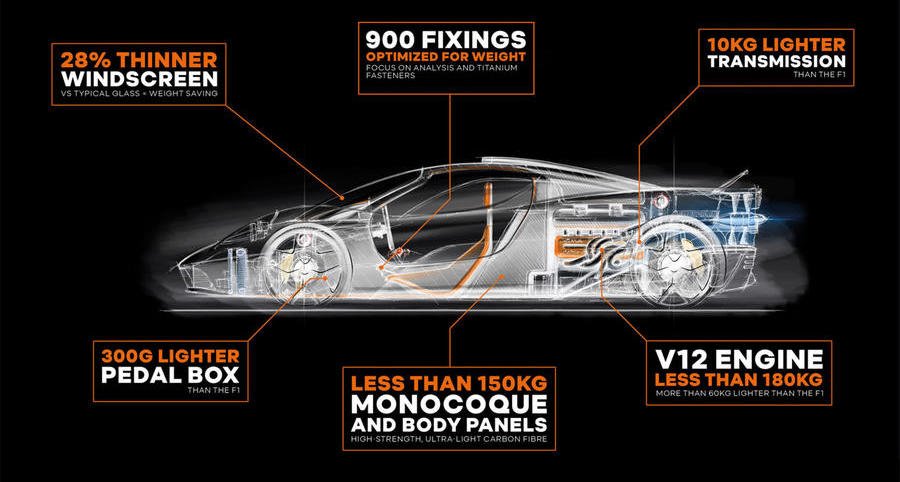A car's design is about so much more than how it looks. Executed well, design forms an intrinsic part of the entire package, in a ground-up process. An example is the new Gordon Murray Automotive T50 supercar, which, it is claimed, will be the lightest V12 supercar ever, at just 980kg. The V12 produces 650bhp and a quick sum reveals a power-to-weight ratio of 663bhp per tonne. But that's not the way one of the industry's most innovative thinkers approaches the task of reducing weight. Murray says it's the other way around that counts: weight to power.
His reasoning goes like this. Calculating weight to power reveals that every 100bhp developed by the T50's V12 has to move 150kg of weight. By comparison, with a typical supercar (which, according to Murray, weighs on average 1460kg), 100bhp is moving 210kg, an increase of 40%. His weight-saving philosophy makes a lot of sense, painting a much clearer picture of the work the powertrain has to do. Weight is worthy of consideration right from the earliest concepts, rather than designing a car and adding lightweight features and materials after the fact.
Why are supercar manufacturers so keen on V12s? Each bank of a V12 is effectively a straight six, and straight-six engines have perfect primary and secondary balance. A V12 never hangs around wasting time, either, because three of the 12 cylinders are always in the power stroke.



